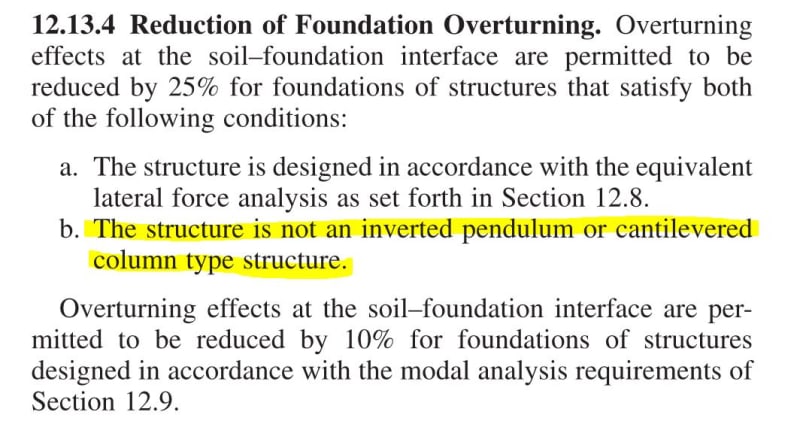oengineer
Structural
- Apr 25, 2011
- 708
I am working on designing a foundation for a jib crane. [highlight #FCE94F]The jib crane is 16 ft tall with a 24 ft cantilever arm. The maximum lifting capacity of the crane is 3 tons.[/highlight]
From CRSI Design Handbook 2008, it mentions to use a Factor of Safety (FOS) of 2.0 for Overturning, see image:
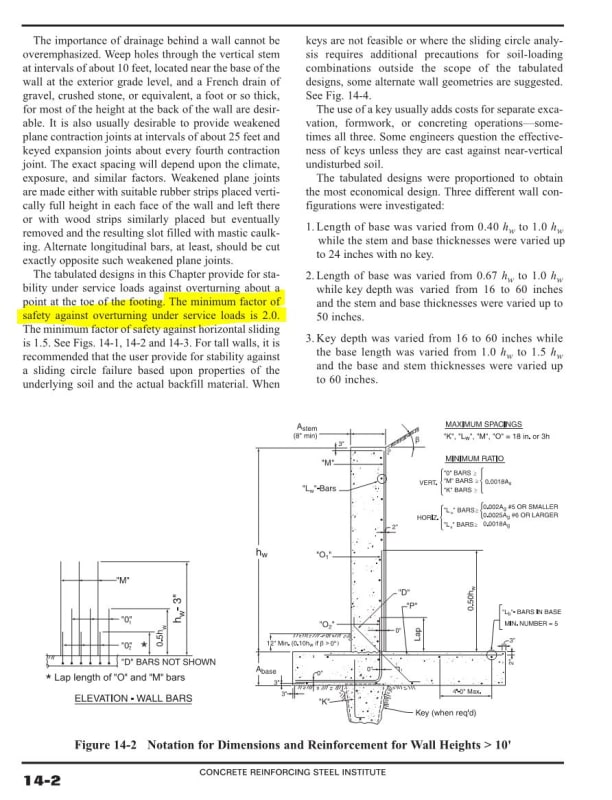
A FOS of 2.0 is also mentioned in Principles of Foundation Engineering, 8th Edition by Braja M. Das:
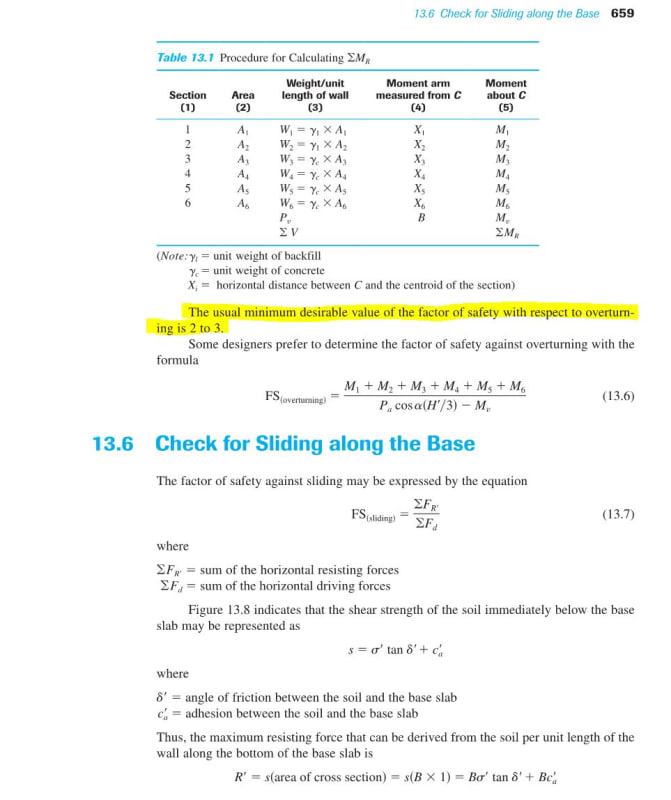
However, it seems PIP mentions the use of FOS = 1.5 or 1.2 for overturning, see images:
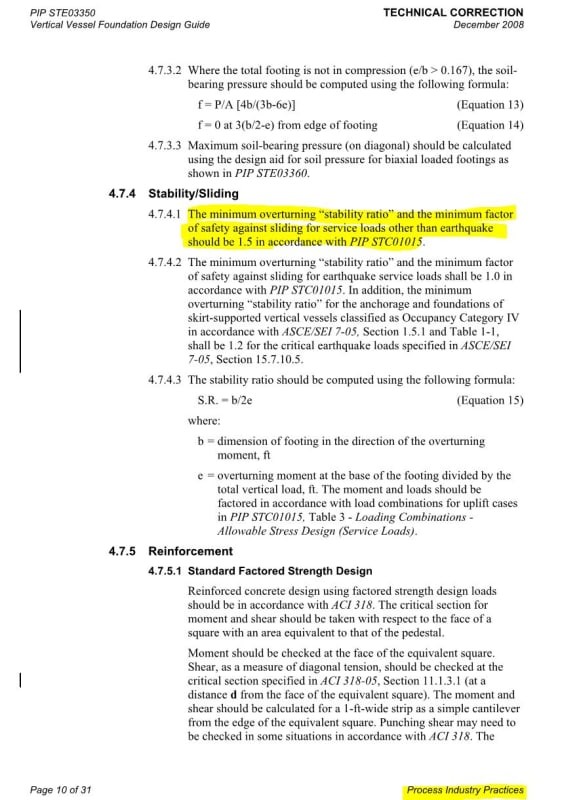
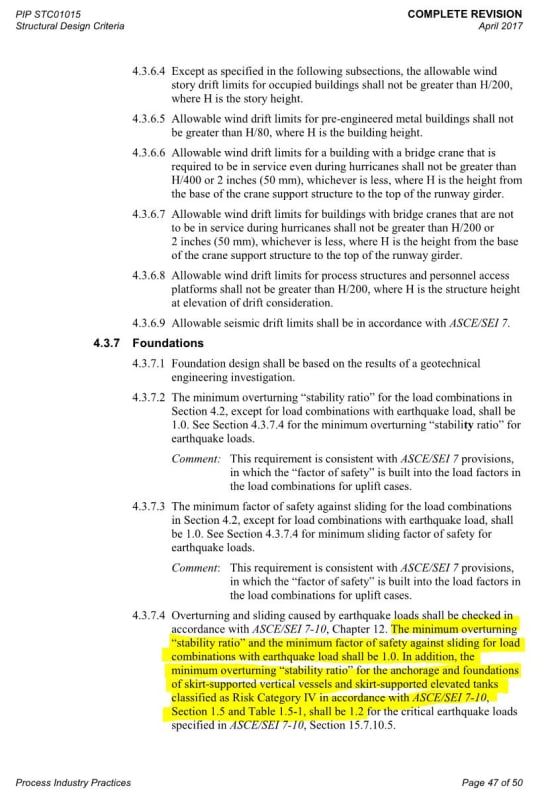
The only explanation to these various FOS I could find is mentioned in the Foundation and Anchor Design Guide for Metal Building System by Alexander Newman:
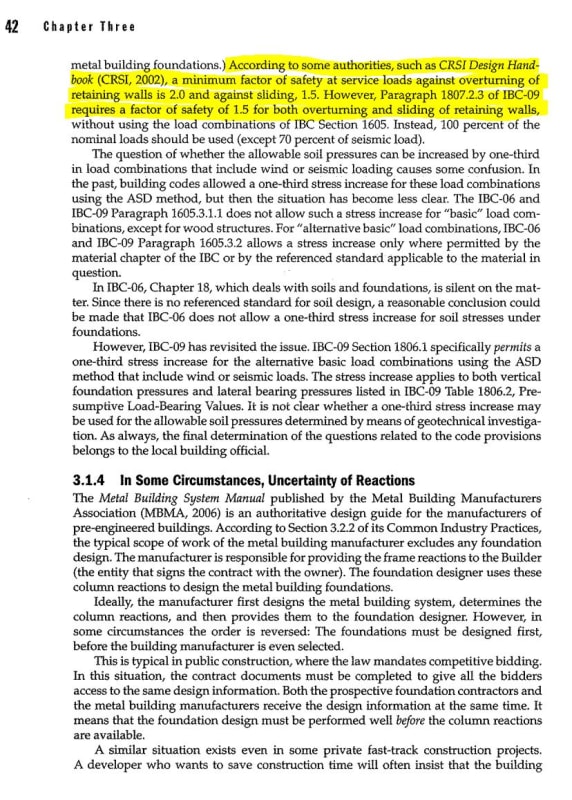
For my particular situation, what would be the appropriate FOS for overturning to use for a jib crane foundation based on the crane description I provided above?
I am inclined to use FOS[sub]overturning[/sub]=2.0, but I would like to have justification for my design which ever route I go.
Comments/suggestions are appreciated.
From CRSI Design Handbook 2008, it mentions to use a Factor of Safety (FOS) of 2.0 for Overturning, see image:

A FOS of 2.0 is also mentioned in Principles of Foundation Engineering, 8th Edition by Braja M. Das:

However, it seems PIP mentions the use of FOS = 1.5 or 1.2 for overturning, see images:


The only explanation to these various FOS I could find is mentioned in the Foundation and Anchor Design Guide for Metal Building System by Alexander Newman:

For my particular situation, what would be the appropriate FOS for overturning to use for a jib crane foundation based on the crane description I provided above?
I am inclined to use FOS[sub]overturning[/sub]=2.0, but I would like to have justification for my design which ever route I go.
Comments/suggestions are appreciated.

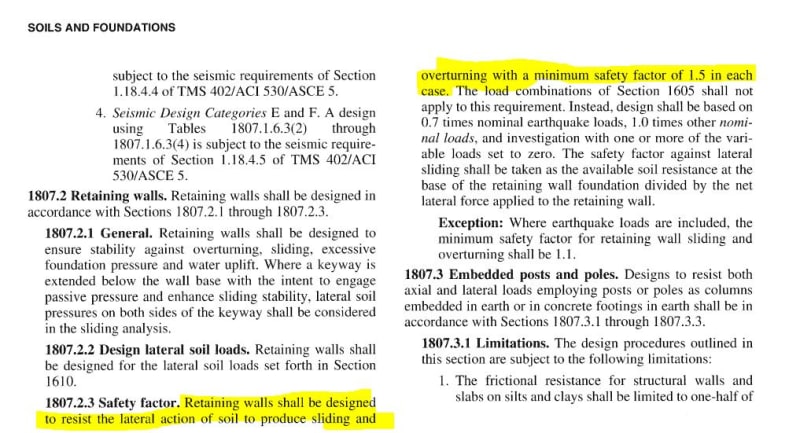
![[pipe] [pipe] [pipe]](/data/assets/smilies/pipe.gif)

